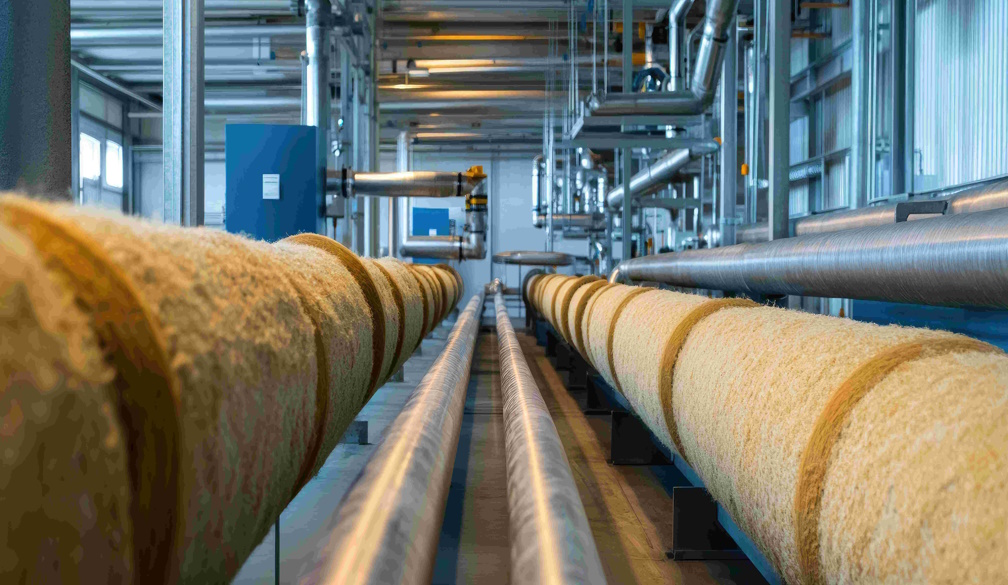Fireproof Industrial Pipe Insulation: Meeting Australian Safety Standards

When it comes to industrial safety, fireproof pipe insulation is non-negotiable. In Australia, strict regulations govern thermal and fire protection systems to prevent catastrophic failures. You need insulation that withstands extreme heat and complies with local standards.
Let’s break down what makes fireproof industrial pipe insulation effective and how to ensure it meets Australian safety requirements.
Why Fireproof Insulation Matters in Industrial Settings
Industrial facilities handle high-temperature processes daily. Without proper insulation, pipes can overheat, leading to energy loss, equipment damage, or even fires. Fireproof insulation acts as a barrier, slowing heat transfer and reducing fire risks.
In Australia, where bushfires and extreme weather are common, protecting infrastructure is critical. You don’t just want insulation—you need a solution that performs under pressure.
Key Australian Standards for Fireproof Pipe Insulation
Standards Australia, the nation’s leading body for setting technical regulations, establishes stringent guidelines to ensure fire safety in industrial applications. Key standards include:
- AS 1530.4 – Fire resistance testing for building materials and structural elements ensures they meet combustibility requirements. This standard plays a crucial role in evaluating how materials perform under fire exposure, helping industries select the safest options for high-risk environments.
- AS/NZS 4859.1 – Thermal insulation materials must adhere to strict fire safety benchmarks under this guideline to ensure regulatory compliance. In addition to fire protection, this standard addresses insulation performance in various temperature conditions, ensuring efficiency and durability across different applications.
Always verify that your insulation complies with these standards. Non-compliant materials can put your facility at risk and lead to legal consequences.
Types of Fireproof Insulation Materials
Not all insulation is created equal. Here are the most effective fireproof materials for industrial pipes:
- Mineral wool – Made from molten rock or slag, mineral wool is naturally fire-resistant. Brands like Rockwool pipe insulation Australia offer premium solutions that withstand temperatures over 1000°C, making them ideal for high-heat industrial environments.
- Calcium silicate – This rigid insulation excels in extreme temperatures and offers excellent structural integrity. It’s often used in refineries and power plants.
- Ceramic fiber – Lightweight yet durable, ceramic fiber insulation handles rapid temperature changes without degrading. It’s perfect for applications requiring flexibility.
- Intumescent coatings – These coatings expand when exposed to heat, forming a protective char layer. They’re often used alongside other insulation types for added safety.
Choose a material based on your facility’s specific needs—temperature range, exposure to chemicals, and installation requirements are key factors to consider.
Installation Best Practices for Maximum Safety
Even the best insulation won’t perform if installed incorrectly. Follow these best practices:
- Seal gaps properly – Any uncovered areas can become weak points. Use high-temperature sealants to ensure full coverage.
- Secure insulation tightly – Loose insulation can sag or detach, reducing effectiveness. Use mechanical fasteners or adhesives rated for high heat.
- Protect against moisture – Some materials lose fire resistance when wet. Add a vapor barrier if needed.
- Conduct regular inspections – Over time, insulation can degrade. Schedule routine checks to ensure it remains intact and effective.
A professional installer can help you avoid common pitfalls and ensure compliance with Australian standards.
The Role of Fireproof Insulation in Energy Efficiency
Fireproof insulation isn’t just about safety—it also boosts energy efficiency. By reducing heat loss, you lower energy consumption and cut costs. In Australia, where energy prices are rising, this is a major advantage.
Proper insulation keeps process temperatures stable, reducing the workload on heating systems. Over time, the energy savings can offset the initial investment.
Common Mistakes to Avoid
Many facilities make these errors when selecting or installing fireproof insulation:
- Ignoring local standards – Assuming international products meet Australian requirements can be a costly mistake. Always check compliance.
- Choosing based on price alone – Cheap insulation may save money upfront but fail in an emergency. Invest in quality materials.
- Neglecting maintenance – Even the best insulation needs upkeep. Don’t assume it’s a “set and forget” solution.
Avoid these pitfalls, and you’ll maximize both safety and performance.
Future Trends in Fireproof Insulation Technology
Innovation is transforming fireproof insulation, with ultrathin materials like aerogels providing exceptional heat resistance while maintaining a lightweight profile. Smart insulation with embedded sensors can monitor temperature changes in real time, alerting you to potential hazards.
As sustainability becomes a priority, eco-friendly fireproof materials are also gaining traction. Staying updated on these trends ensures your facility remains at the forefront of safety and efficiency.
Final Thoughts
Fireproof industrial pipe insulation is a critical investment. In Australia, meeting safety standards isn’t optional—it’s a legal and ethical necessity. By choosing the right materials, installing them correctly, and maintaining them well, you protect your facility, workers, and bottom line.
Don’t cut corners. Prioritize quality, compliance, and long-term performance. Your safety depends on it.
Ready to upgrade your insulation? Consult a specialist to ensure your system meets all Australian standards and delivers the protection you need.














